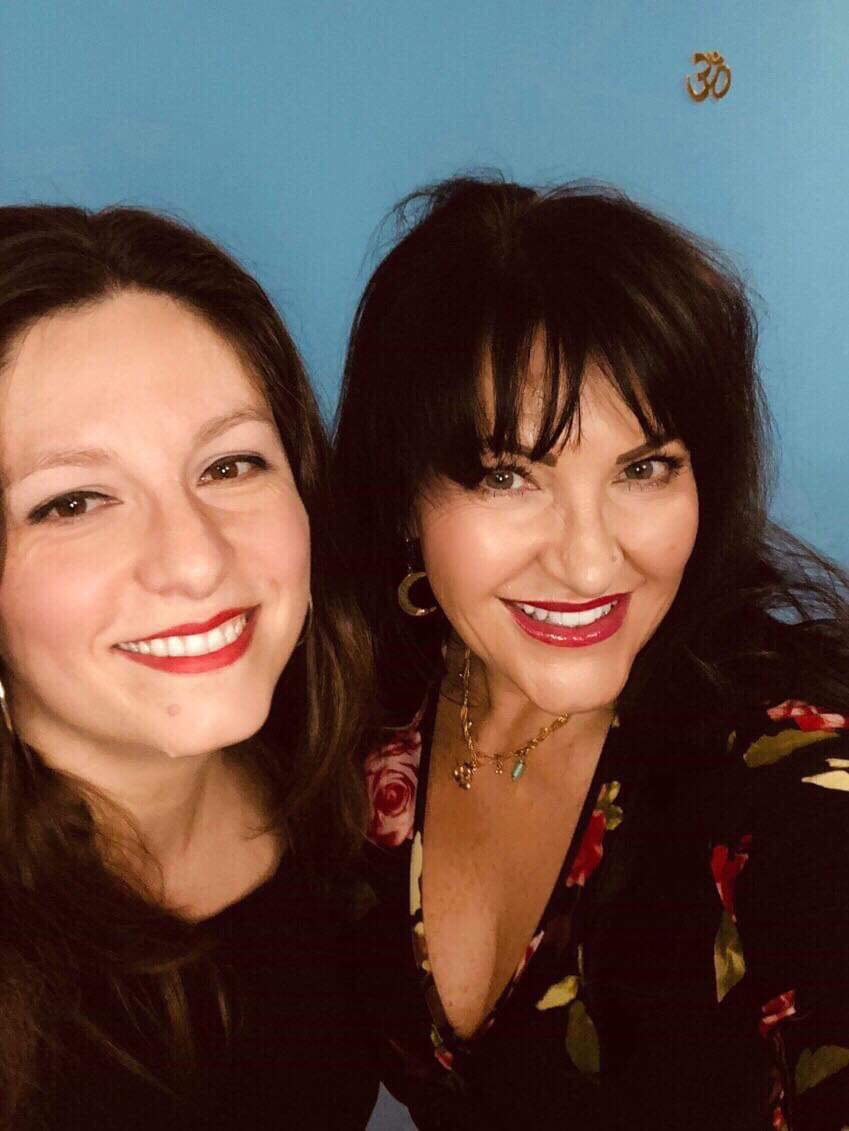Last month, I did an unusually spontaneous thing. I was on Facebook when I saw a video of a dancer who had amazing fluidity and grace. And playfulness. You know, the exact qualities I want in my dance. When I googled her, I found out she lived in Toronto — and I was about to go there the next week. Well, in a matter of hours, we had gotten in touch, and I had a booking for my first private dance class ever with Badia Star, aka Brenda Bell.
I had no idea what to expect. We did talk in advance about the kinds of things I wanted to cover, but the whole structure of a private class was new to me. And because I hadn’t done any bellydance in quite a long time — and in a class, even longer — a lot of what we did involved trying out different movements and finding the spots where I could learn the most.
Badia/Brenda is such a warm, encouraging, spirited teacher. But she was also carefully watching me to give me tips on form and execution, which is exactly what I want in an instructor. I came away with a long list of notes on what we did, and ideas on what I could practice on my own. So here were some of the things the class made me pay attention to:
- Oh my lord are my shoulders tight. I knew that I had lost some connection to my abs over the past years (ok a lot), but I didn’t realise how tight my shoulders had become. Really tight. Rock solid. This is a thing. Not a good thing.
- For someone with a swayback, a strong core is really just as important in bellydance as it is in ballet. This has to be my number one concern, and I think it’s part of the reason ballet classes have often left my body feeling better than bellydance ones. (Despite how “artificial” ballet feels, it’s all about strength in the core and engaging every possible muscle.)
- So much of my bellydance training has involved standing in a single spot and doing a move. Maybe doing a few moves. But definitely standing in that spot. Perhaps also pivoting on that spot, or doing one or two steps to the left and to the right. What has my bellydance training rarely integrated? Broad-ranging movement across the floor, learning isolations in combination with steps (not as things that have to be added to each other), really covering space. This was perhaps the big mind explosion in this class. The reason I am so static in my dance is that I have learned this dance in a static way. (I’ve taken classes with a few other teachers who put the steps first, and wonder if doing steps first might not be a better way to transition to actual dance.) Badia had me moving the whole time, walking around the room, linking movements together. And it was challenging, but gave me a sense of how to actually dance with these movements as opposed to presenting them.
- This is perhaps the hardest realisation to articulate. Bellydance for me has always been about coming to terms with my feminine self, whatever that meant at a particular point in my life. As a 20-year-old, it meant finding a form of womanhood I could feel natural in. As a 30-something, it was part of adjusting to motherhood. But as I approach forty, working in a male-dominated environment, it’s really hard to know what that should look like at all. I just know that losing bellydance as a daily practice has gone hand in hand with other kinds of loss. And I want to change that.
There’s a lot more that I’m thinking about. I’ve been practicing a bit more since the private class, though sickness and work have kept me from doing so as much as I’d like. But I was so very glad I did it — it was precisely the kind of boost and inspiration I needed at this point. Now it’s time to figure out the next steps…






